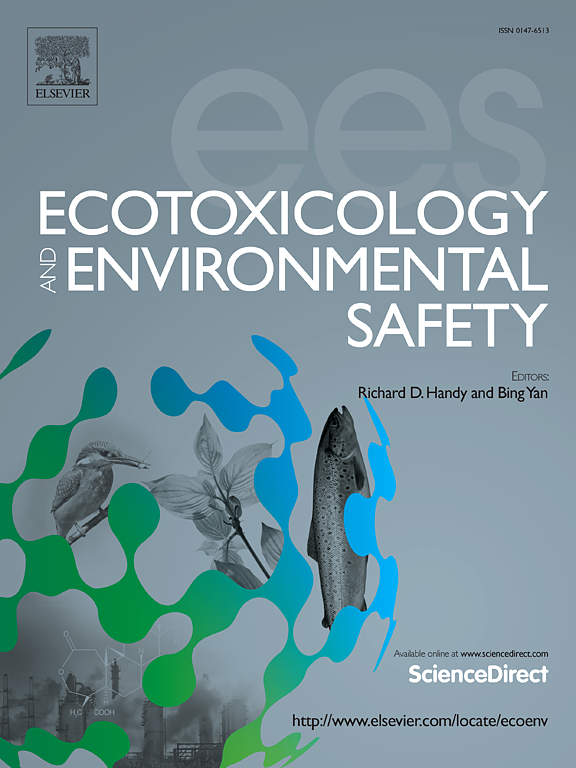有机磷酸酯代谢物暴露与肌少症患病率之间的关系:利用 NHANES 数据进行的横断面研究。
IF 6.2
2区 环境科学与生态学
Q1 ENVIRONMENTAL SCIENCES
引用次数: 0
摘要
有机磷酸酯(OPEs)是一类新出现的环境污染物,与众多健康问题有关,其在环境中日益普遍的程度令人担忧。然而,暴露于 OPEs 对肌肉疏松症(一种以肌肉流失和虚弱为特征的疾病)的影响仍然未知。在这项研究中,研究人员利用美国国家健康与营养调查(NHANES)涵盖 2011 年至 2018 年期间的数据,调查了尿液中 OPEs 代谢物与肌肉疏松症发生率之间的联系。分析发现,磷酸二丁酯(DBUP)和磷酸二(2-氯乙基)酯(BCEP)这两种特定的尿液代谢物与肌肉疏松症风险的增加呈正相关。根据加权量化总和(WQS)模型分析,在这些代谢物中,DBUP对肌少症的发生影响最大。此外,研究还发现,炎症介导了尿液中的 DBUP/BCEP 暴露与肌肉疏松症发病率之间的关系。总之,这项研究强调了 OPE 在肌肉疏松症发展过程中的作用,引起了人们对其对健康的潜在影响的关注,并提倡对其与患肌肉疏松症风险的相关性进行进一步的前瞻性研究。本文章由计算机程序翻译,如有差异,请以英文原文为准。
Association between exposure to organophosphate esters metabolites and sarcopenia prevalence: A cross-sectional study using NHANES data
Organophosphate esters (OPEs) are an emerging group of environmental pollutants linked to numerous health concerns, and their increasing prevalence in the environment is alarming. However, the impact of OPEs exposure on sarcopenia, a condition characterized by muscle loss and weakness, remains unknown. In this study, the connection between urinary metabolites of OPEs and the occurrence of sarcopenia was investigated using data from the National Health and Nutrition Examination Survey (NHANES) covering a period from 2011 to 2018. The analysis found that two specific urinary metabolites, Dibutyl phosphate (DBUP) and Bis (2-chloroethyl) phosphate (BCEP), were positively correlated with an increased risk of sarcopenia. Among these metabolites, DBUP had the highest contribution to sarcopenia development according to weighted quantile sum (WQS) model analysis. Additionally, it was observed that inflammation mediated the relationship between urinary exposure to DBUP/BCEP and the prevalence of sarcopenia. Overall, this research emphasizes the role of OPEs in the progression of sarcopenia, prompting concerns regarding their potential impact on health and advocating for further prospective investigations into their correlation with the risk of developing sarcopenia.
求助全文
通过发布文献求助,成功后即可免费获取论文全文。
去求助
来源期刊
CiteScore
12.10
自引率
5.90%
发文量
1234
审稿时长
88 days
期刊介绍:
Ecotoxicology and Environmental Safety is a multi-disciplinary journal that focuses on understanding the exposure and effects of environmental contamination on organisms including human health. The scope of the journal covers three main themes. The topics within these themes, indicated below, include (but are not limited to) the following: Ecotoxicology、Environmental Chemistry、Environmental Safety etc.

 求助内容:
求助内容: 应助结果提醒方式:
应助结果提醒方式:


